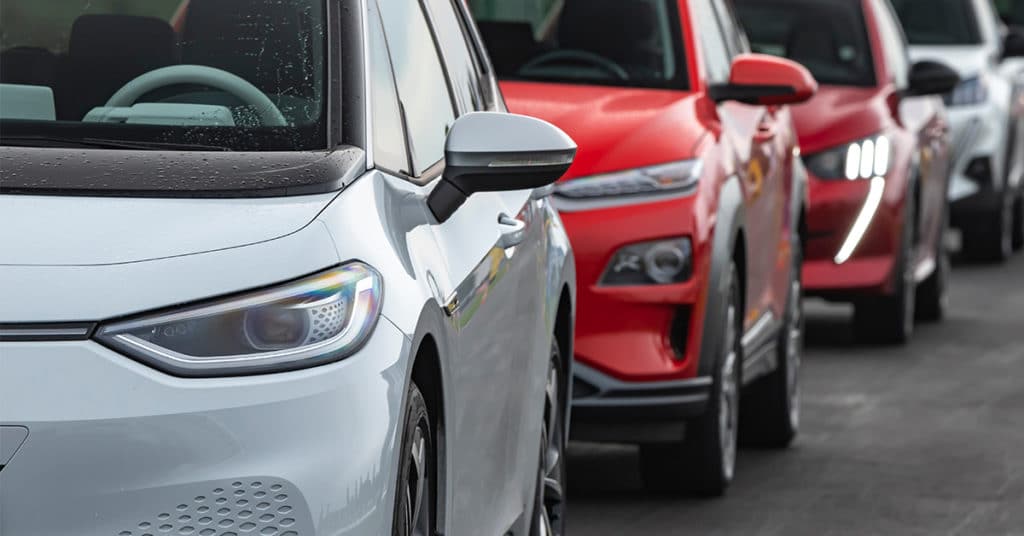The CFO Challenge in Uncertain Times
Rising interest rates. Tariff‑driven input costs. Inflation that refuses to ease. CFOs are navigating a shifting terrain, where every cost category is under pressure. One area that often slips under the radar: vehicle programs. What once seemed innocuous now hides volatility. In today’s climate, companies need programs that flex with economic realities rather than compound risk.
A CFO Dive survey revealed that finance chiefs expect price growth at their companies would be 25% lower in 2026 if not for tariffs. Tariff pressures are reshaping cost structures across industries, particularly in areas like transportation and logistics that are directly tied to vehicles. Meanwhile, Forbes reports that nearly 40% of CFOs rank tariffs as their number one concern, surpassing inflation, regulation, and labor costs. This demonstrates just how deeply global trade policies are reshaping financial planning.
These conditions create a clear imperative: outdated vehicle programs, whether fleet ownership or flat allowances, are simply not built for resilience in volatile times.
Why Fleet and Allowance Models Don’t Hold Up
- Fleet: Escalating Costs and Lack of Agility
Fleet programs may feel like control, but they hide steep and unpredictable costs. Insurance, maintenance, depreciation, and repairs all compound into ongoing expenses. AlixPartners estimates that 80% of new tariff costs will be passed into vehicle prices, adding more than $1,700 to the average vehicle price. For companies locked into fleet contracts, this means significant sunk costs with limited ability to adjust. In an era when flexibility is paramount, fleet programs are a liability.
- Allowances: Tax Leakage and Equity Gaps
Flat car allowances appear simple: one line item, one payment. But, the reality is complex and costly. Allowance payments are taxable income, and studies show 30–40% of allowance dollars are lost to payroll and income taxes. This leakage hurts both employees and employers, draining dollars that should cover business costs. On top of tax waste, flat allowances fail to account for real-world differences in driving patterns. Employees in rural areas or high-cost regions often end up underpaid, while others are overpaid. This imbalance not only drives up costs but also undermines fairness, creating dissatisfaction across the workforce.
- Compliance and Audit Exposure
The IRS requires mileage substantiation for reimbursements to qualify as business expenses. Flat allowances do not provide this, leaving companies exposed to audits and penalties. Fleet programs introduce additional risk: employees may use vehicles outside of business purposes, and any accident can increase liability. Without the right substantiation and risk controls, outdated programs jeopardize compliance.
Why CFOs Are Making the Shift Now
Economic Forces Aren’t Temporary
CFO.com warns that liquidity constraints will force tighter cost controls across organizations. The Conference Board projects that tariffs could slow GDP growth to ~1.6% in 2026, down from 2.8% in 2024. For CFOs, vehicle costs, which are often the second-largest expense after payroll, can no longer go unscrutinized.
Risk Management Is Front and Center
Commercial auto insurance has become a volatile budget line item. Industry data shows that a single accident can spike premiums by 30–45%. Fleet-heavy programs magnify this risk. Allowances do not solve it either; without mileage logs, companies lack visibility into risk exposure. For CFOs tasked with safeguarding profitability, unmanaged vehicle programs represent unnecessary liability.
Workforce Satisfaction Is a Business Priority
Employee engagement has entered the CFO agenda. Travelers’ CFO survey highlighted that nearly one-third of CFOs now see employee satisfaction and engagement as a top business factor. Outdated programs like fleets and allowances erode employee trust. Fleets limit personal choice and saddle employees with vehicles they may not want. Flat allowances result in inequities and frustration. In competitive labor markets, those missteps hurt retention.
The Smarter Alternative: Modern Reimbursement Models
Forward-looking CFOs are shifting toward Fixed and Variable Rate (FAVR) reimbursement and similar modern approaches. These programs offer compliance, fairness, and cost control that older models lack. Here’s how they map directly to CFO concerns:
- Optimize Spend: Companies report cost savings of up to 40% by transitioning from fleet or allowances to FAVR. These savings come from reducing tax waste, cutting hidden overhead, and aligning costs with actual business use .
- Reduce Risk: Mileage substantiation and audit-ready records eliminate IRS exposure. Liability risk decreases as companies move away from fleet ownership and toward employee-owned vehicles.
- Increase Productivity: With centralized data and simplified administration, organizations spend less time on program management and more time on strategic priorities.
- Improve Employee Satisfaction: Tailored, tax-free reimbursements based on real driving costs ensure fairness and empower employees to drive vehicles that suit their needs. This boosts engagement and reduces turnover.
Strategic Lessons from Recent Market Shifts
Economic volatility is exposing every weak link in corporate cost structures. Vehicle programs are no exception. CFOs once accepted fleets and allowances as a cost of doing business. Today, these programs are being reconsidered alongside capital expenditures, supplier contracts, and labor strategies.
- Tariff Risks Are Real: AlixPartners and WardsAuto show how tariffs will directly raise vehicle costs, underscoring the urgency for CFOs to move away from asset-heavy fleets.
- Insurance Volatility Is Here to Stay: With rising premiums, any program lacking substantiation or controls will increase risk exposure.
- Employee Expectations Have Changed: Fairness, flexibility, and financial transparency are now non-negotiables for workforce satisfaction. Modern reimbursement models deliver on those expectations in ways outdated programs cannot.
Key Takeaway for CFOs
Economic turbulence is not an exception; it’s the new operating reality. For CFOs, outdated vehicle programs represent a costly blind spot. Shifting to modern reimbursement models like FAVR equips organizations to optimize spend, reduce risk, increase productivity, and improve employee satisfaction. In volatile times, these outcomes aren’t just nice-to-have. They’re essential for long-term resilience.
FAQs
- Why are vehicle programs such a big deal in today’s economy?
Because vehicles are capital-intensive, usage-dependent, and directly impacted by tariffs, fuel costs, and insurance volatility. CFOs expect tariffs alone to account for a 25% increase in price growth in 2026.
- How do tariff pressures affect fleet acquisition costs?
AlixPartners found that 80% of tariff costs are passed directly to vehicle buyers, raising average prices by $1,700 per vehicle.
- Can switching to reimbursement models really deliver ROI within a year?
Yes. Companies transitioning to modern reimbursement programs often realize ROI within 12 months, thanks to reduced tax waste and better alignment of costs with business needs.






